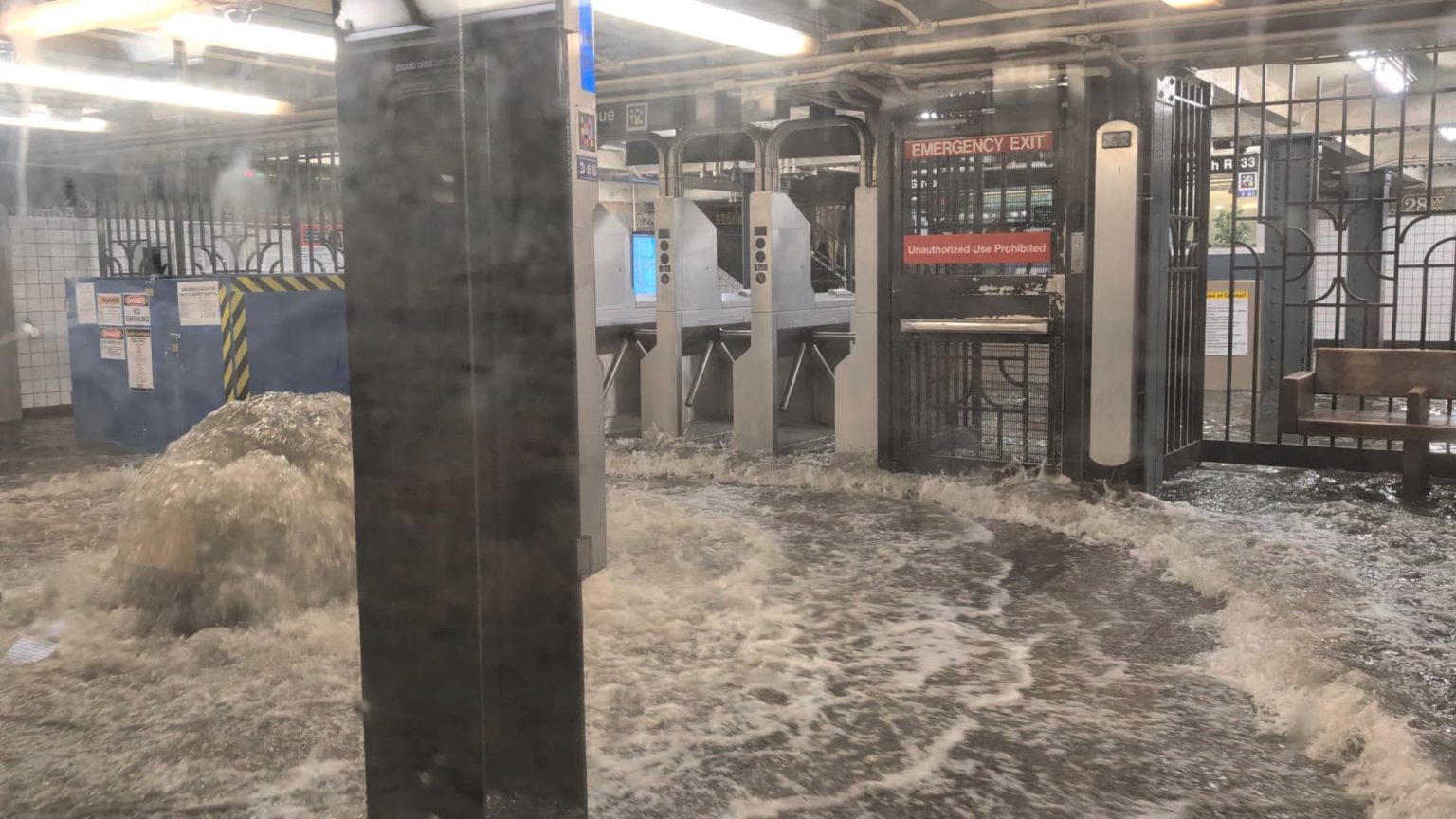Heavy rains in the northeastern United States have led to significant flash flooding in New York City and New Jersey, prompting emergency declarations and public warnings. Residents of basement apartments in New York were advised to be prepared for evacuation, while the New Jersey governor declared a state of emergency as storms caused life-threatening conditions. The National Weather Service reported that rainfall rates reached alarming levels, although the most intense showers began to diminish by the evening.
| Article Subheadings |
|---|
| 1) Emergency Declarations and Public Advisories |
| 2) Impact on Transportation and Infrastructure |
| 3) Ground Conditions and Public Safety Measures |
| 4) Community Reactions and Rescues |
| 5) Weather Forecast and Future Projections |
Emergency Declarations and Public Advisories
In the wake of intense rainfall, New Jersey’s Governor Phil Murphy announced a state of emergency for the region, as the National Weather Service warned of life-threatening flash flooding in Western Union County. Heavy rains began Monday afternoon and continued into the evening, with most areas seeing rainfall rates as high as two inches per hour. Residents in basement apartments in New York City were especially urged to remain vigilant and be prepared to evacuate swiftly if necessary. Emergency management authorities made it clear that flash flooding can occur without any significant warning, urging the public to have essential emergency supplies on hand. The city was under a flash flood warning throughout Monday evening, although this warning was set to expire later that night.
Impact on Transportation and Infrastructure
The heavy rainfall severely impacted transportation networks in the area, causing significant delays and disruptions. LaGuardia, Newark Liberty, and John F. Kennedy airports were among the hardest-hit, reporting numerous flight cancellations due to the severe weather conditions. The Federal Aviation Administration noted that ground stops were implemented at LaGuardia and Newark airports due to thunderstorms, leading to long waiting periods for travelers. Additionally, significant portions of major highways, including the Cross Bronx Expressway, were rendered impassable due to standing water, prompting emergency officials to close access in both directions. This created a ripple effect of traffic delays throughout the city, hampering commuters and emergency responders alike.
Ground Conditions and Public Safety Measures
Floodwaters transformed many streets and public areas into dangerous hazards, with reports emerging from Westchester County, where emergency services fielded numerous calls about submerged vehicles. Officials emphasized the importance of staying indoors unless absolutely necessary and recommended that residents create a “Go Bag” consisting of essential items such as phones, flashlights, and necessary medications. These measures are particularly vital for those living in basement apartments. Video footage from social media illustrated the challenging conditions, showing individuals wading through knee-deep water in various locations, such as New Providence, New Jersey, around ten miles from Newark.
Community Reactions and Rescues
As the storm wreaked havoc, local communities displayed resilience, with volunteer organizations and first responders mobilizing quickly to assist those affected. Rescues were underway for individuals stranded in vehicles as floodwaters surged around them. Residents reported feeling anxious but remained thankful for the quick response of emergency services. “It’s tough, but we are grateful our neighbors and first responders have come together to help each other out in this time of crisis,” a resident said. The community’s unity in the face of peril showcased the strength of local bonds and the human spirit amid challenging conditions.
Weather Forecast and Future Projections
As night fell, the National Weather Service indicated that the heaviest rain had moved east of New York City and began to weaken significantly after 10 p.m. However, officials cautioned that additional rain was still forecasted for the night, prompting ongoing advisories to remain mindful of the potential for flash flooding. Up to three inches of rain were anticipated to accumulate in some regions throughout the storm. Emergency responders continued to monitor the situation closely, preparing for any further developments that could impact public safety.
| No. | Key Points |
|---|---|
| 1 | New Jersey’s governor declared a state of emergency due to severe flooding. |
| 2 | Residents in New York City were warned to evacuate basement apartments if necessary. |
| 3 | Transportation networks faced significant disruptions, including flight cancellations. |
| 4 | Emergency services conducted rescues amid flood conditions in various locations. |
| 5 | Weather forecasts indicated ongoing rainfall with continued risks of flooding. |
Summary
The current meteorological crisis in New Jersey and New York City serves as a reminder of nature’s unpredictable power. The flooding has disrupted daily life, prompting emergency declarations and community mobilization in the face of adversity. Knowing how to respond during environmentally perilous situations, from individual preparedness to communal action, is essential as weather patterns continue to evolve.
Frequently Asked Questions
Question: What are the primary causes of flash flooding?
Flash flooding typically occurs due to heavy rainfall over a short period, as well as pre-existing conditions such as saturated soil or blocked drainage systems.
Question: How can residents prepare for flash flooding?
Residents can prepare by creating a Go Bag with essentials, knowing evacuation routes, and keeping informed through local weather alerts.
Question: What should residents do if they are caught in flash flooding?
If caught in flash flooding, individuals should move to higher ground immediately, avoid driving through floodwaters, and stay updated with emergency services and weather alerts.


